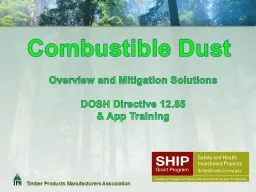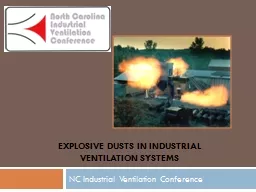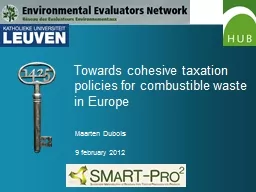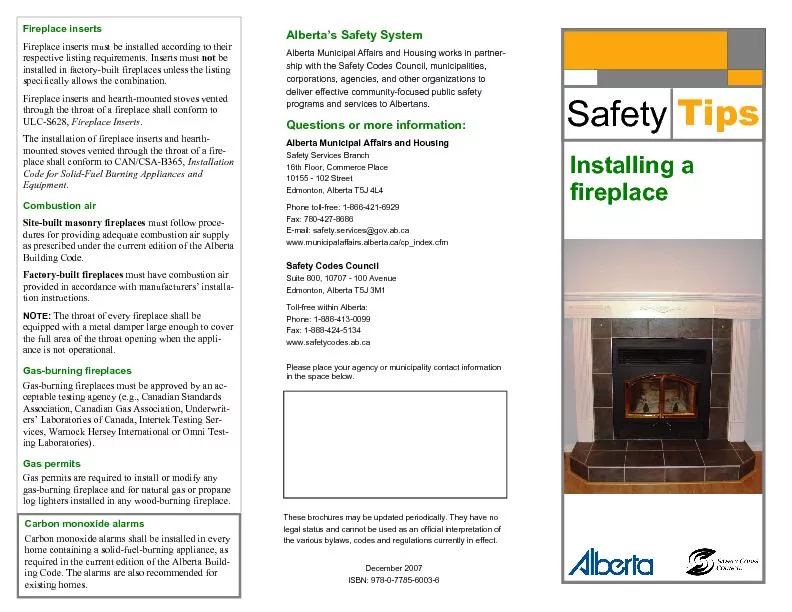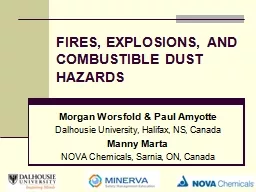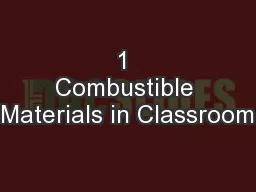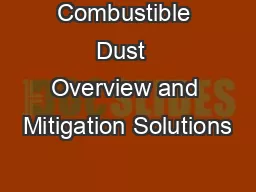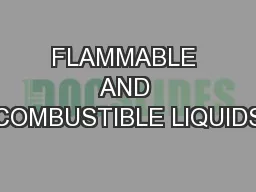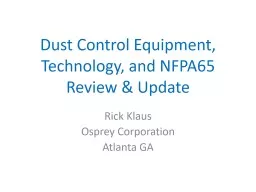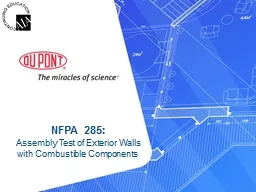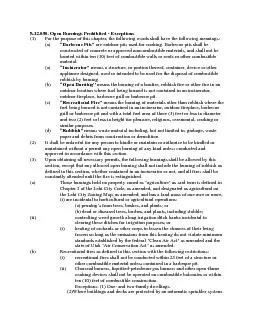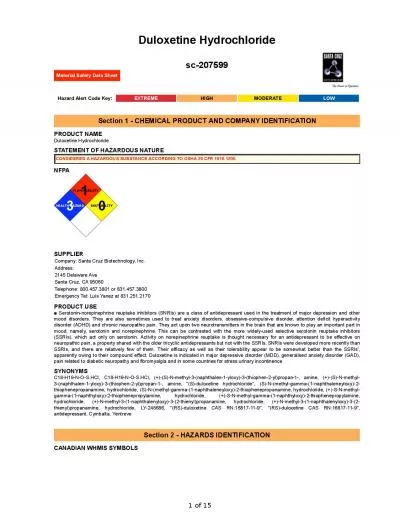PPT-Combustible Dust Overview and Mitigation Solutions
Author : tatiana-dople | Published Date : 2020-04-06
DOSH Directive 1285 amp App Training Why Dust has the potential to cause dust deflagrations Fires Explosions Injury Death Stories Examples Videos Discussion Background
Presentation Embed Code
Download Presentation
Download Presentation The PPT/PDF document " Combustible Dust Overview and Mitigati..." is the property of its rightful owner. Permission is granted to download and print the materials on this website for personal, non-commercial use only, and to display it on your personal computer provided you do not modify the materials and that you retain all copyright notices contained in the materials. By downloading content from our website, you accept the terms of this agreement.
Combustible Dust Overview and Mitigation Solutions: Transcript
Download Rules Of Document
" Combustible Dust Overview and Mitigation Solutions"The content belongs to its owner. You may download and print it for personal use, without modification, and keep all copyright notices. By downloading, you agree to these terms.
Related Documents

